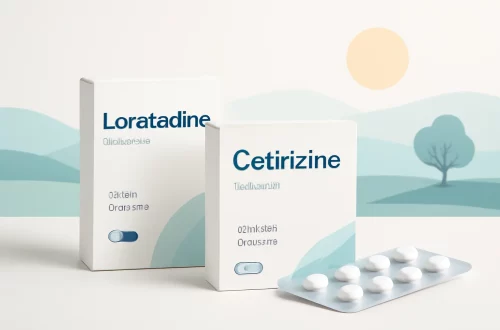
Understanding Why the Clitoris Hurts and How to Find Relief
Understanding the complexities of female anatomy is essential for fostering a positive and healthy sexual experience. Among the various components of the female reproductive system, the clitoris stands out as a significant organ, primarily associated with sexual pleasure. Despite its vital role, many women experience discomfort or pain in this area, leading to confusion and concern. Understanding the reasons behind clitoral pain can help demystify this common issue and empower individuals to seek appropriate solutions.
Clitoral pain can manifest in various ways, from sharp sensations to a dull ache, and may occur during different activities, including sexual intercourse, physical exertion, or even while sitting. This discomfort can stem from a range of physiological and psychological factors, making it crucial to approach the subject with sensitivity and awareness. By exploring the underlying causes of clitoral pain, individuals can better navigate their experiences and find relief.
Moreover, discussing clitoral pain openly can help break societal taboos surrounding female sexuality and health issues. When women feel comfortable addressing their discomfort, they are more likely to seek help, whether through self-care practices, lifestyle changes, or professional medical advice. This article aims to shed light on the factors contributing to clitoral pain and provide insights into effective relief strategies.
Common Causes of Clitoral Discomfort
Clitoral discomfort can arise from a variety of causes, both physical and emotional. Understanding these origins is the first step in finding effective relief. One of the most common physical causes is irritation or inflammation. This can result from various factors, including friction during sexual activities, the use of harsh soaps or personal care products, or even certain fabrics that may cause rubbing or chafing.
Another significant contributor to clitoral pain can be infections, such as yeast infections or sexually transmitted infections (STIs). These conditions can lead to inflammation and sensitivity, causing pain in the clitoral area. Symptoms of infections often include itching, unusual discharge, and swelling, which can exacerbate discomfort.
Hormonal fluctuations can also play a role in clitoral sensitivity. Changes in hormone levels, particularly during menstrual cycles or menopause, can lead to increased sensitivity in the clitoris and surrounding areas. This heightened sensitivity can sometimes translate into discomfort or pain.
Psychological factors should not be overlooked, as they can significantly influence physical sensations. Anxiety, stress, or past traumatic experiences can create a heightened awareness of pain in the clitoral area. This psychological aspect can lead to a cycle where the fear of pain exacerbates the discomfort, making it essential to address both the physical and emotional dimensions of clitoral pain.
Understanding these common causes can empower individuals to take proactive steps toward alleviating discomfort. By identifying triggers and seeking appropriate treatment, whether through lifestyle adjustments or medical consultation, individuals can work towards a more comfortable experience.
Self-Care Strategies for Relief
When dealing with clitoral pain, self-care is a powerful tool that can lead to significant relief. Implementing gentle and mindful approaches can help alleviate discomfort and promote healing. One of the first steps is to ensure proper hygiene without overdoing it. It’s crucial to clean the area with mild, unscented soap and water, avoiding harsh chemicals that can further irritate sensitive skin.
Moisturizing the area can also provide relief, especially if dryness is a contributing factor. There are various products designed for intimate areas, including natural oils or creams specifically formulated for sensitive skin. Always opt for hypoallergenic products free from fragrances or irritants.
Additionally, wearing breathable, cotton underwear can minimize friction and irritation. Avoiding tight-fitting clothing or synthetic materials can prevent exacerbation of discomfort. If physical activity causes pain, consider modifying your routine to include gentler exercises that do not put pressure on the pelvic region.
Stress management techniques can also play a vital role in alleviating clitoral pain. Practices such as yoga, meditation, or deep-breathing exercises can help reduce anxiety and promote relaxation. By addressing the psychological aspects of discomfort, individuals can foster a more positive relationship with their bodies.
Lastly, keeping a pain diary can be beneficial. Documenting when the pain occurs, its intensity, and any associated activities can help identify patterns and triggers. This information can be valuable when consulting with a healthcare provider.
Implementing these self-care strategies can lead to noticeable improvements in comfort levels and overall well-being. It’s important to listen to your body and take proactive steps to create a supportive environment for healing.
When to Seek Professional Help
While self-care strategies can provide significant relief, there are times when seeking professional help becomes essential. If clitoral discomfort persists despite self-care measures, it may indicate an underlying medical condition that requires attention. Recognizing when to consult a healthcare provider is vital for addressing potential health issues.
One of the primary reasons to seek professional help is if the pain is severe or debilitating. If clitoral pain interferes with daily activities or sexual intimacy, it is crucial to speak with a healthcare professional. They can conduct a thorough evaluation and provide appropriate diagnoses and treatment options.
Infections are another critical reason to consult a doctor. If symptoms such as itching, unusual discharge, or swelling accompany the pain, it’s essential to seek medical advice. Early diagnosis and treatment of infections can prevent further complications and promote faster recovery.
Hormonal issues can also necessitate professional intervention. If discomfort correlates with hormonal changes, such as those experienced during menopause or menstruation, discussing these symptoms with a healthcare provider can lead to effective management strategies.
Psychological factors contributing to clitoral pain should also be addressed. If anxiety, depression, or past trauma is affecting your sexual health and comfort, seeking help from a mental health professional can be beneficial. Therapy can provide tools for coping with emotional pain and fostering a healthier relationship with your body.
Ultimately, knowing when to seek professional help is crucial for maintaining sexual health and overall well-being. Don’t hesitate to reach out to a healthcare provider if discomfort persists, as they can offer tailored advice and treatment options.
**Disclaimer:** This article is not a substitute for professional medical advice. If you experience persistent pain or discomfort, please consult a healthcare provider for personalized guidance and treatment.



